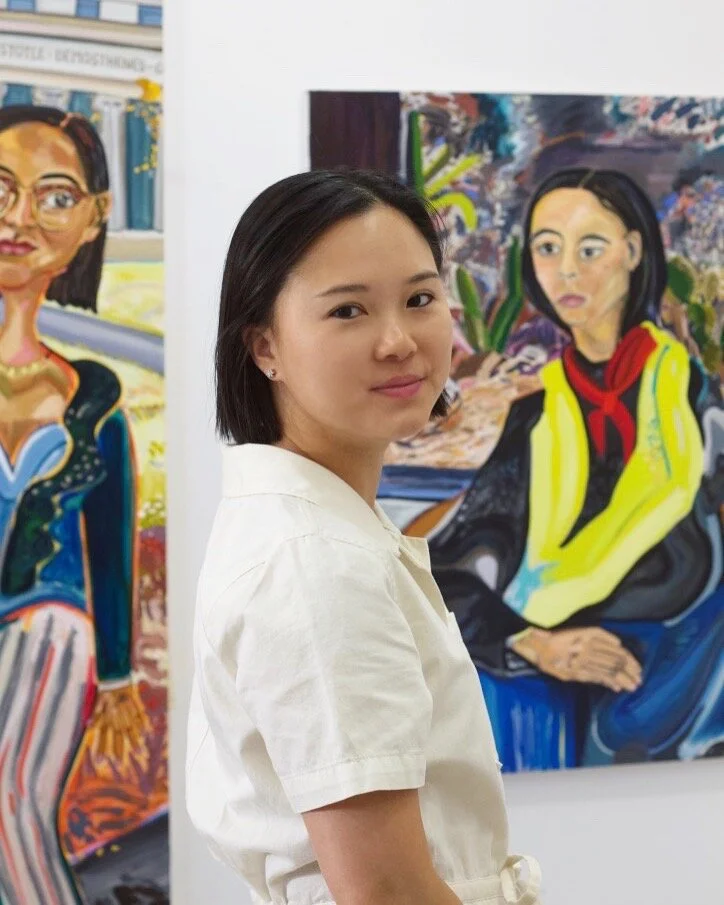In Conversation with Asif Hoque: Brown Men as Phenomenal Subjects on the Canvas
Portrait by Kyle Dorosz.
Brooklyn-based, Bangladeshi artist Asif Hoque brings a softness and sensuality to his multi-dimensional representations of Brown men in his oil-based paintings. Hoque talks genuinely about the purpose and power of the color brown in his artistry, and the complexity behind those choices.
GG: I'm drawn to your representation of Brown masculinity in your art. What is your personal definition of maleness that you're conveying?
AH: I enjoy playing with the concept of masculinity in my work. Specifically, when I address Brown maleness I work to widen the acceptable means of expression. I highlight the fluidity of that expression by drawing figures that are muscular in stature, but float almost as if they were weightless.
Your paintings are big, bold, beautiful, and very vibrant. Can you talk about your color choices?
In my work, I chose to paint with multiple shades of brown. The way that I chose to paint with the color brown has a lot to do with showing love for my own skin tone, it’s a type of love that I wish was more represented in my South Asian community. It’s important that the brown I represent has depth, is warm, and most importantly holds your attention.
“The way that I chose to paint with the color brown has a lot to do with showing love for my own skin tone, it’s a type of love that I wish was more represented in my South Asian community.”
Eternal sunshine of the spotless mind, oil on canvas, 2018. Courtesy of the artist.
Nature is a huge backdrop in your work. How do you interpret the landscapes of Bangladesh and South Florida in your work?
Both Bangladesh and South Florida are foundational to my identity, so using the bright and tropical essence of these places keep my figures grounded and protected.
Untitled (Dancing figure 1), oil on canvas, 2018. Courtesy of the artist.
In your own words you talk about addressing the unique experience of living "in between". What does that mean to you and how does it show up in you art?
The feeling of existing in the “in-between” means battling the conflicting aspects of my identity. In my painting, I want to represent figures that can embody all parts of themselves without feeling inauthentic.
Untitled (Dancing figure 2), oil on canvas, 2018. Courtesy of the artist.
What's next for 2020, but real talk, feel free to be honest about these uncertain times we're in and how you're coping.
I’m blessed to not experience the full impact of the pandemic. During this unpredictable time, I’m trying to remain positive and grateful. As an art teacher, being able to continue to interact with my class allows remaining hopeful about the future.










